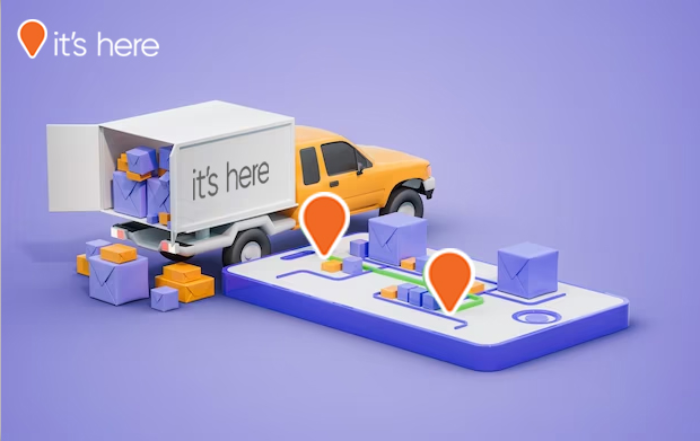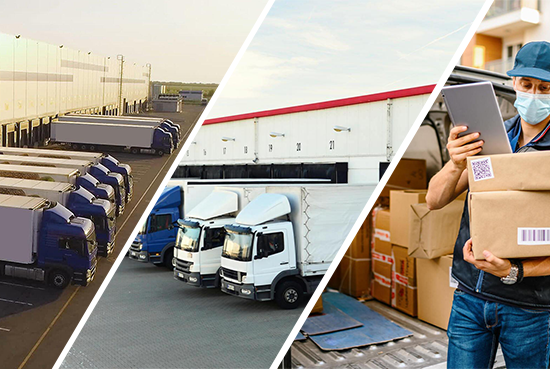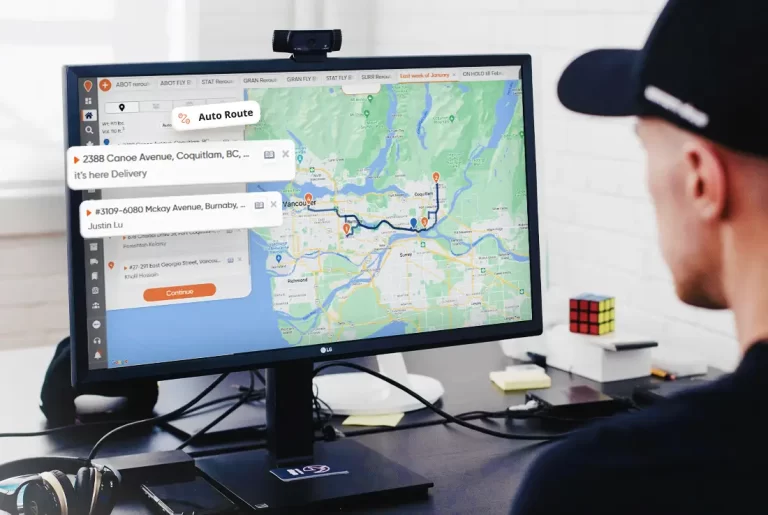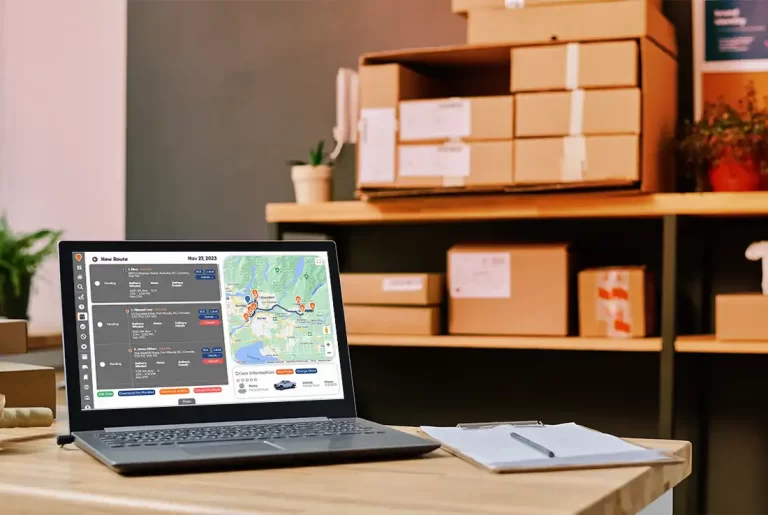The delivery process, encompassing first-mile, middle-mile, and last-mile delivery, operates within Canada’s vast ecosystem. This complexity, set against Canada’s diverse landscape, necessitates innovative solutions by businesses and logistics providers to address each stage’s unique challenges for efficient, successful deliveries.
The first mile, including first-mile pickup, is the initial step in supply chain operations, seamlessly leading into “First Mile, Middle Mile, and Last Mile Delivery solutions.” This progression ensures goods move efficiently from origin to end consumer, significantly influencing factors like efficiency, cost-effectiveness, and customer satisfaction throughout the journey.
The First Mile: From Supplier to Transportation Hub
The first mile, often questioned as what is first-mile delivery, is the initial stage where goods move from the supplier to the hub, facilitated by First Mile solutions. This crucial phase involves collection and transportation, laying the groundwork for the entire delivery process.
Key points regarding the first mile in Canada include:
- Ensuring Precise Picking and Packaging: Accurate picking and packaging of goods are crucial to kickstart the supply chain journey on the right foot. Businesses need to implement robust inventory management systems, employing barcodes or RFID technology to track and manage stock levels effectively.
- Geographical Challenges: Canada’s vast landmass presents geographical challenges, especially in remote and rural areas. Navigating long distances, rough terrain, and limited infrastructure can pose difficulties in efficiently transporting goods from suppliers to transportation hubs.
- Supplier Coordination: Coordinating with numerous suppliers across different regions adds complexity to the first mile. Efficient communication, streamlined processes, and strong supplier relationships are essential to ensure timely and accurate pick-ups.
- Inventory Management: Accurate inventory management is crucial in the first mile to avoid stockouts or delays. Implementing robust first mile tracking systems, utilizing advanced technologies, and employing efficient warehouse management practices are vital for seamless operations.
- Navigating Complex Documentation: The first mile involves dealing with a multitude of paperwork and documentation, including invoices, bills of lading, and customs paperwork for international shipments. Implementing digital document management systems and collaborating with experienced customs brokers can streamline documentation processes, reducing administrative burdens and potential delays.

The Middle Mile: Transportation between Hubs
The middle mile, a critical phase in logistics, involves transportation between distribution centers or hubs. Middle Mile solutions optimize this process through efficient routing, real-time tracking, and advanced logistics software, ensuring goods move swiftly and reliably from one hub to the next.
Considerations specific to Canada’s middle mile delivery include:
- Efficient Routing: Optimizing routes and choosing the most cost-effective transportation methods is essential in the middle mile. Balancing factors such as distance, capacity utilization, fuel efficiency, and regulatory compliance is key to reducing costs and ensuring timely deliveries.
- Regional Connectivity: Canada’s vast geography and sparse population in certain areas can pose challenges in establishing reliable transportation networks, especially for first mile pickup. Investing in infrastructure development, leveraging technology for real-time tracking, and collaborating with regional carriers can enhance regional connectivity. This is particularly important for the first mile pickup, as it sets the stage for efficient and effective transportation throughout the supply chain.
- Cross-Border Logistics: For businesses involved in cross-border trade, navigating customs processes and adhering to international regulations adds complexity to the middle mile. Partnering with experienced customs brokers and leveraging technology for seamless cross-border documentation and tracking can facilitate smooth operations.
- Multi-Modal Logistics: The middle mile frequently requires coordination between diverse transportation modes, including road, air, sea, and rail. Optimizing the use of these modes, managing intermodal transitions, and minimizing transportation costs while ensuring timely deliveries demand careful strategizing.

The Last Mile: Final Delivery to the Customer
The last mile, often addressed by “The Last-Mile Delivery Solutions,” represents the final stage in the delivery process, entailing the transportation of goods from the distribution center directly to the end customer’s doorstep.
Key considerations for Canada’s last mile delivery include:
- Urban and Rural Dynamics: Canada’s last-mile delivery faces unique challenges due to the varying dynamics between urban and rural areas. In urban regions, high population density and traffic congestion require efficient route planning, while in rural areas, longer distances and limited infrastructure demand strategic logistical solutions.
- Customer Expectations: Customer expectations regarding fast deliveries, flexible delivery options, and real-time tracking are constantly increasing. Meeting these expectations through seamless communication, personalized delivery experiences, and convenient delivery time windows is crucial for customer satisfaction.
- Delivery Density and Optimization: In densely populated urban areas, optimizing delivery density is critical to minimize transportation costs and reduce carbon emissions. Employing route optimization algorithms, leveraging data analytics, and exploring alternative delivery methods like micro-hubs or lockers can enhance delivery efficiency.
Solutions and Innovations:
- Technology Adoption: Embracing advanced technologies like GPS tracking, route optimization software, and real-time visibility tools can significantly enhance the efficiency and transparency of the entire delivery process.
- Collaboration and Partnerships: Establishing strategic partnerships with regional carriers, local suppliers, and logistics providers can facilitate streamlined operations, improve regional connectivity, and address the unique challenges of each delivery stage.
- Customer Communication: Implementing robust customer communication channels, including real-time tracking updates, automated notifications, and interactive customer service platforms, can foster transparency, manage expectations, and address customer queries proactively.
- Sustainable Delivery Practices: Adopting sustainable delivery practices, such as utilizing electric vehicles, optimizing routes for fuel efficiency, and exploring green logistics solutions, can help mitigate environmental impact and align with Canada’s sustainability goals.
Last mile impact on customer satisfaction
The last mile of delivery, influenced by the efficiency of the first mile pickup, has a profound impact on customer satisfaction. It is the final stage of the delivery process where the package, initially collected during the first mile pickup, reaches the customer’s doorstep. This crucial phase, which is a direct continuum from the first mile, is where the customer’s expectations are met, exceeded, or potentially let down.
A smooth and seamless last mile experience leaves customers feeling satisfied, delighted, and more likely to become repeat customers. On the other hand, any issues or delays during this stage can lead to frustration, disappointment, and a negative perception of the entire delivery service.
Timely Delivery
Timely delivery is a key factor in customer satisfaction during the last mile. When packages arrive within the expected time window or even earlier, customers feel valued and their trust in the delivery service is reinforced. Additionally, clear and transparent communication plays a vital role. Providing accurate first-mile tracking updates, notifications, and real-time ETAs allows customers to plan their day accordingly and reduces uncertainty.
Moreover, friendly and professional interactions between delivery personnel and customers contribute to a positive last-mile experience, which is often a reflection of the entire process starting from the first-mile delivery service. A courteous and helpful approach during the final handover of the package, which began its journey with a quality first-mile delivery service, enhances the overall impression and leaves a lasting positive impact.
Understanding the supply chain, first-mile delivery involves the initial movement of goods from the manufacturer, middle-mile covers transportation to distribution centers, and last-mile delivery ensures the final product reaches the customer. This seamless transition from first to last mile is crucial for boosting customer satisfaction and loyalty. What’s First Mile, Middle Mile, and Last Mile Delivery?

Difference between First Mile, Middle Mile, and Last Mile Delivery
First Mile, Middle Mile, and Last Mile Delivery represent distinct stages in the logistics chain. The First Mile involves transportation from the point of origin to a distribution center. The Middle Mile refers to movement between distribution centers or hubs. Finally, the Last Mile denotes the journey from the hub to the customer’s doorstep, often the most complex and costly phase.
It’s Here Solution for the last mile
- Real-Time Tracking and Notifications: “It’s Here” offers real-time tracking capabilities, allowing customers to monitor their package’s progress from the distribution center to their doorstep.
- Flexible Delivery Options: It’s Here offers flexible delivery options. This includes the ability to choose preferred delivery time slots or alternative delivery locations, such as local pick-up points or lockers.
- Direct Communication with Drivers: It’s Here enables direct communication between customers and drivers through its mobile app. Customers can easily contact their assigned driver.
- Customer Ratings and Feedback: It Here values customer feedback and provides a platform for customers to rate their delivery experience.
- Professional and Courteous Delivery Personnel: The final mile experience is enhanced through friendly interactions and a customer-focused approach. Delivery personnel are trained to provide exceptional service, ensuring a positive and memorable experience for customers.
Wrap-up
Navigating Canada’s delivery landscape involves mastering “First Mile, Middle Mile, and Last Mile Delivery.” Each stage presents unique challenges, from initial dispatch to the final destination. Leveraging technology, collaboration, customer communication, and sustainable practices optimize the process, providing a competitive edge in this diverse market.
By addressing the intricacies of the first mile, including understanding what is first-mile delivery, middle-mile, and last-mile, businesses can achieve operational efficiency, customer satisfaction, and long-term success in the ever-evolving world of logistics and e-commerce. This comprehensive approach, starting with a clear comprehension of what is first-mile delivery, ensures a solid foundation for the entire logistics chain.
FAQs:
What makes Last Mile delivery challenging in Canada?
Last Mile delivery faces challenges like traffic congestion in urban areas, remote or rural delivery locations, and providing timely deliveries while managing customer expectations. The diversity of Canadian landscapes and weather conditions further complicates this stage.
What are the unique challenges of Middle Mile delivery?
Middle Mile challenges often involve logistical coordination between multiple warehouses, ensuring timely transportation, and managing inventory across different locations. The vast distances in Canada can also add to transit times and costs.





